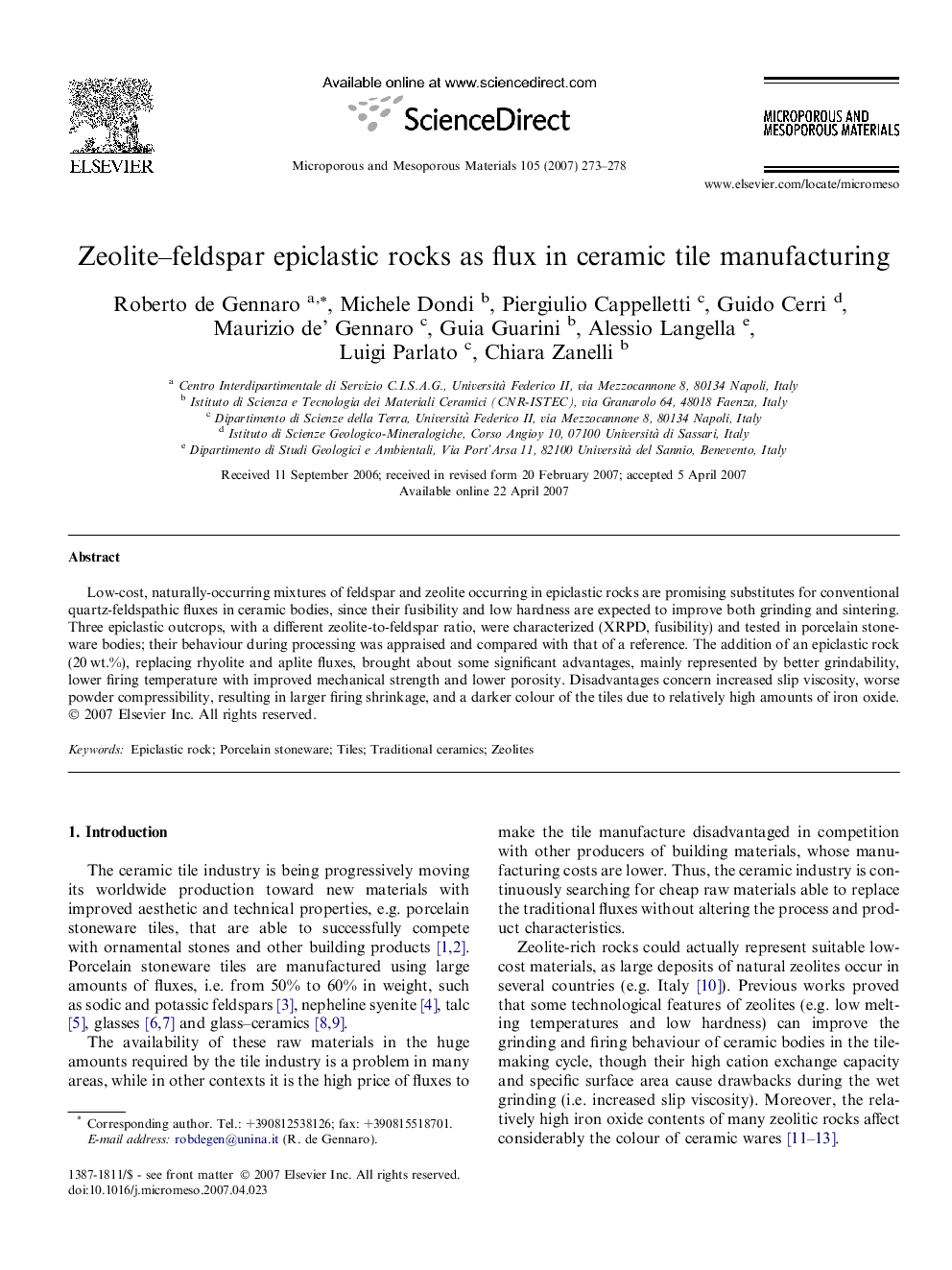| Article ID | Journal | Published Year | Pages | File Type |
|---|---|---|---|---|
| 76019 | Microporous and Mesoporous Materials | 2007 | 6 Pages |
Low-cost, naturally-occurring mixtures of feldspar and zeolite occurring in epiclastic rocks are promising substitutes for conventional quartz-feldspathic fluxes in ceramic bodies, since their fusibility and low hardness are expected to improve both grinding and sintering. Three epiclastic outcrops, with a different zeolite-to-feldspar ratio, were characterized (XRPD, fusibility) and tested in porcelain stoneware bodies; their behaviour during processing was appraised and compared with that of a reference. The addition of an epiclastic rock (20 wt.%), replacing rhyolite and aplite fluxes, brought about some significant advantages, mainly represented by better grindability, lower firing temperature with improved mechanical strength and lower porosity. Disadvantages concern increased slip viscosity, worse powder compressibility, resulting in larger firing shrinkage, and a darker colour of the tiles due to relatively high amounts of iron oxide.
